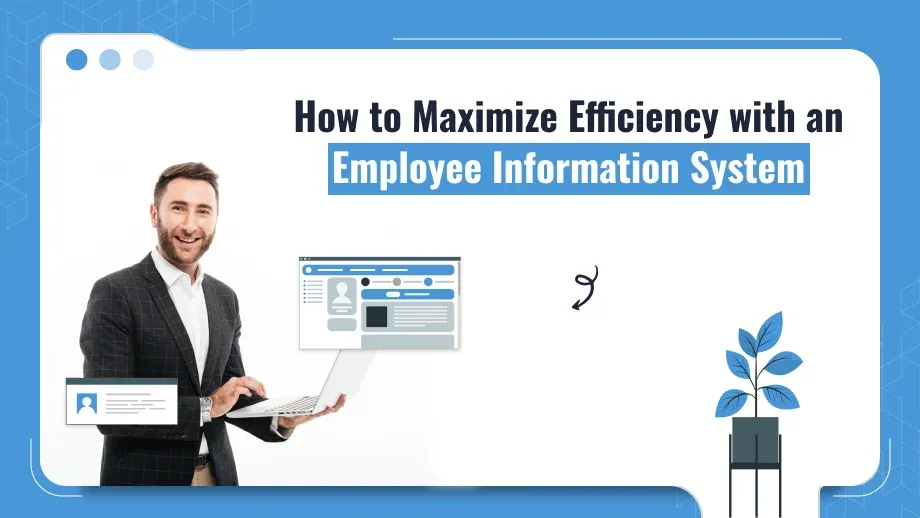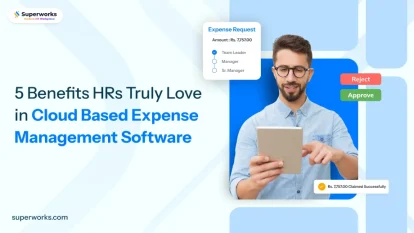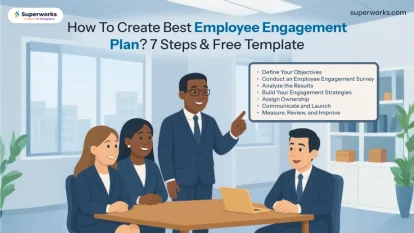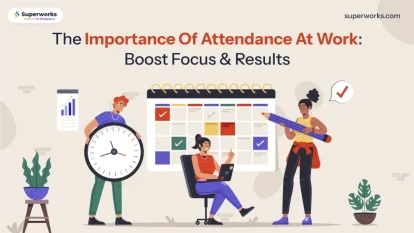
Managing employee data is one of the biggest challenges as you grow. An Employee Information System( EIS) helps you centralize, secure, and automate all things hand. Whether it’s tracking attendance, managing payroll, trafficker onboarding, or performance reviews, an EIS is the ultimate result of streamlining HR tasks and boosting functional efficiency.
Short Answer An Employee Information System is a tool that consolidates employee records, automates admin tasks, and secures data. This guide will cover its features, benefits, implementation, and how it fits into the bigger picture of information management to drive business issues.
What’s an Employee Information System?
An Employee Information System is an operation information system that consolidates employee data such as particular details, job roles, performance metrics, and payroll information into one system. This system improves how organizations manage, access, and use employee data
Features of an Employee Information System:
- Centralized Data Management: One place for all employee information, reducing duplication and redundancy.
- Automation of HR Tasks: The employee information system automates tasks from payroll to attendance tracking, eliminating manual errors.
- Data Security: Robust encryption and role-based access controls to store employee data securely and comply with data protection laws?
- Employee Self-Service Portals: Employees can update their personal information system, view payslips, and track performance without going through HR?
- An EIS sits within a bigger framework of business information systems that contribute to the organization’s overall efficiency. These systems support information management systems that streamline operations, improve decision-making and data security
Why EIS is important in today’s business
Centralized Data for Better Decision-Making
An Employee Information System consolidates data from multiple departments into one platform, enabling an MIS Executive to help management make informed decisions faster. Whether it’s performance reviews, compensation planning, or promotions, having data at your fingertips means faster and more accurate decision-making. This reduces delays and makes the organization more agile.
Efficiency through Process Automation
Manual HR tasks aren’t only time-consuming but also error-prone. By automating payroll, attendance tracking, and performance reviews, a hand information system frees up HR Management Systems to focus on strategic activities. These systems can also generate reports that give insights into workforce efficiency and productivity so you can identify areas to improve.
Automation also ensures compliance by ensuring processes are done accurately and constantly, reducing the risk of non-compliance.
Employee Engagement through Self-Service Tools
Modern Employee Information Systems development comes with self-service tools that allow employees to manage their HR information, track leave and update personal details that improve employee engagement process. This reduces the managerial load on HR teams and empowers employees, leading to advanced engagement and satisfaction.
By giving employees control of their data, organizations create a more transparent and inclusive work culture where employees feel more in control of their work experience.
Data Security and Compliance
Managing sensitive employee data such as social security numbers, bank details, and performance records requires a high position of security. A hand information system ensures that only authorized personnel can access specific data through part-based access controls and encryption to protect data from breaches. An EIS also helps organizations comply with data protection laws like GDPR so all employee data is handled according to legal requirements.
Where does an EIS fit into broader information management systems
An EIS integrates with other business information systems so it’s a part of the overall technology infrastructure of the organization. These systems manage not only employee data but also finance, supply chain, and customer data, to create a total information management system.
Integrations:
- HRMS( Human Resource Management System) While an EIS manages employee data, HRMS handles broader Human Resource Information System, HR functions like payroll, performance management, and recruitment?, Attendance Monitoring System: An EIS can sync with attendance systems to automate time-tracking and leave management.
- HR Software Platforms: In some cases, Employee Information System platforms are part of larger HR software solutions that offer tools for employee management, performance tracking, and compliance.
By integrating these systems, organizations create a single source of truth.
How To Implement An Employee Information System
1. Assess Organizational Needs
Before selecting and implementing an EIS, organizations need to identify the specific pain points and requirements. Is it payroll automation? Or is it performance tracking? Knowing these needs will help you choose the right system that aligns with your organization’s goals.
2. Choose the Right EIS Platform
Once you know what you need, you need to evaluate different employee management system based on user-friendliness, scalability, security features, and integration capabilities. Also, choose a platform that has strong data security measures like encryption and role-based access?.
3. Train Employees on the New System
Training is key to the successful relinquishment of any new system. give training sessions to all relative stakeholders so they know how to use the EIS to its full potential. This includes HRMS Management System teams and general employees who will use the self-service tools.
4. Monitor and Refine
After you’ve implemented the system, monitor its performance and gather user feedback. This will help you identify areas that need improvement so the system continues to meet the changing needs of the business?.
40% of SaaS companies confess they lack an adequate Employee Information System!
Enhance your employee information with the greatest HRMS software, Superworks!
EIS Implementation Challenges and How to Overcome Them
1. Resistance to Change
When a new system is introduced, some employees will repel. To counter this, involve key stakeholders in the decision-making process and communicate the benefits of the system. give thorough training and ongoing support to help the transition.
2. Data Migration Issues
Migrating data from old systems to a new employee information system can be tricky especially if data is incomplete or disorganized. Make sure data is clean and standardized before migration.
3. Security
Handling employee data is sensitive. To secure data, choose an HRMS platform with advanced security features like encryption, two-factor authentication and regular system audits.
How to Measure Your EIS
After you’ve implemented an EIS, you need to measure its success through Key Performance Indicators (KPIs). These can be:
- Time Saved on HR Processes: How much time is saved through automation, especially on repetitious tasks like payroll and attendance tracking?
- Reduction in Errors: Monitor the data accuracy after implementing the system. Fewer manual entries should mean fewer errors.
- Employee Satisfaction: Use surveys or feedback tools to measure how employees are responding to the new system, especially the self-service tools?.
Monitor and metrics will help you refine the system and fix issues as they arise.
Conclusion
An Employee Information System offers many benefits to businesses by simplifying HR processes, securing data, and improving decision-making. From automating payroll to tracking performance criteria and data protection compliance, an EIS has all the tools you need to manage employees efficiently.
In a world where business agility and data-driven decisions are key, implementing an EIS is a smart move for any business looking to scale.






